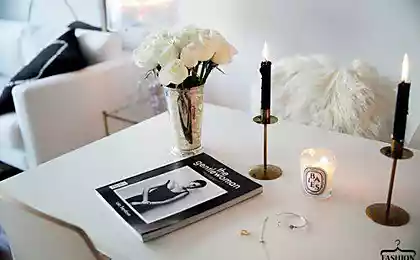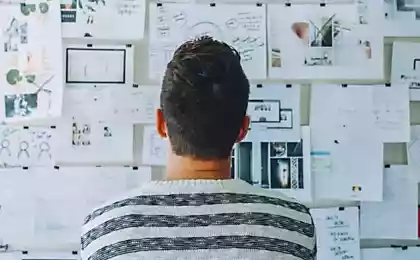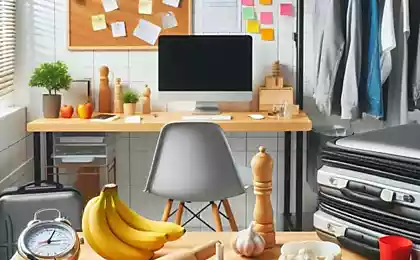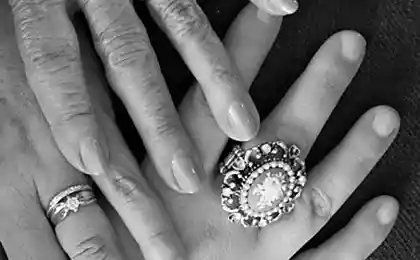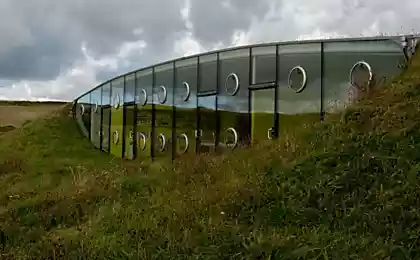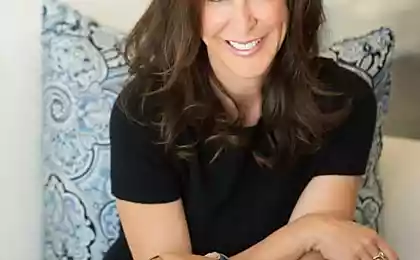303
How to learn how to plan things
Scrum is a project management system. American programmer Jeff Sutherland invented this technique, as he was tired of struggling with the shortcomings of the classical approach. So there was the most simple and affordable way to plan tasks. And, it would seem, where programmers, and where household worries, but the Scrum system proved itself perfectly in this field.
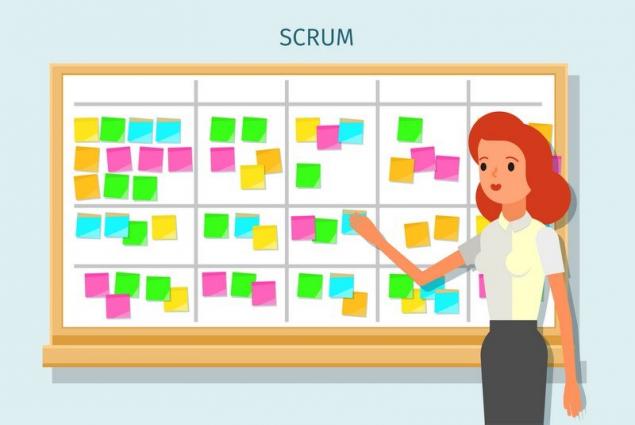
DepositPhotos
The system can be used to organize your own work or to repair, clean and even educate your child. This is the last one we will talk about today. Editorial "Site" will tell you scrum and its use in domestic affairs.
All you need to create such a board is a cardboard or free wall, which must be divided into columns, and stickers with inscriptions. You can make a different number of columns depending on what the board is created for, but more about this later. The bottom line is in three columns: “Should be done”, “In work”, “Done”. Stickers are your tasks that are not overwritten, but simply moved from one column to another.
The board is often hung in a prominent place so that the tasks are always before your eyes. This interactive table will allow you to see what has already been done and what is yet to be done. The point is to break things down into small steps so that you can feel things moving forward.
Thanks to this method, you can more efficiently allocate time to household tasks or plan a weekend. With the help of such a board, you can even learn the language, breaking the process into small tasks. As soon as your stickers are in the “Made” column, you’ll be surprised how quickly you got it done. Scrum saves in any situation.
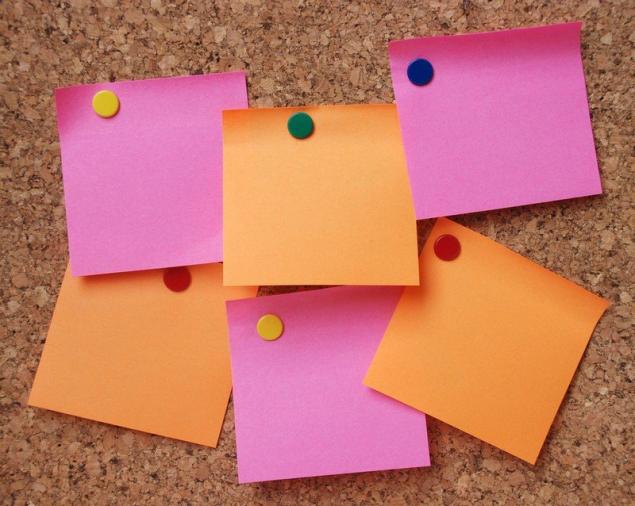
DepositPhotos
I have a friend who, using this simple technique, made the repair as quickly and efficiently as possible. Man managed to force the workers to work on the principle of scrum-team. He met with the builders every morning to discuss what was done and what was not. He asked what prevented them from completing their tasks. Each action was marked on the board.
It may sound silly, but it didn't take six months to repair. Everything was completed in a month, the family returned to the renovated house, and everyone was happy. This is the best example that this method works well in domestic affairs.
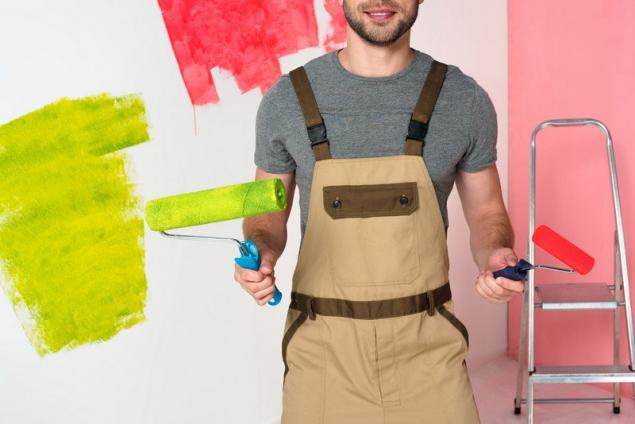
DepositPhotos
But let's go back to that. How to organize a child’s day With a board like this. If you are going to use this method, you need to understand one important thing: the child should be interested and work on the board with you. Children are different and everyone needs their own approach. Present it as a game, in this form children perceive anything better.
Now to organizational matters. Since this is a board for a child or for all family members, it should be in a prominent place. A great option is the refrigerator door. Whether you like it or not, you'll run into her a couple times a day. That would be a great reminder.

DepositPhotos As we said, the board consists of columns, and stickers move to the state of “made”. You can leave the classic scheme with three columns or slightly complicate the design, simplifying the process. Here is how the columns will be arranged in this case:
Basically, this is the whole method, but there are a couple of important nuances. First and foremost, the board does not live on its own. You need to follow it, constantly discuss tasks, talk about why one task was difficult, why something did not happen. Even when busy, you can find 10-15 minutes in the evening to discuss everything.
First, disassemble the “Verification” column. Did all the tasks really happen? Be sure to praise the child for the completed tasks and find out why the remaining ones in the Do column are not done. Then move some tasks from the Nado column to the Do column to plan tomorrow.

DepositPhotos
The same review should be done at the end of the week. Analyze completed tasks, praise everyone, free the board from unnecessary stickers and fill in new ones. Regularity is essential to achieve maximum efficiency. But do not put pressure on the child, so that the board does not become the subject of quarrels and does not cause a backlash.
Don't turn the board into a tool of suppression. Let your child plan some things yourself, be sure to add something pleasant, like computer games or watching cartoons. It should be, but only after the rest of the work is done. This will teach the child that everything has its time and the faster he does something important, the faster he can relax and have fun.
It helps to organize the child, make him responsible and executive. It is good if there are things on the board for parents, so that there is someone to take an example from. Having established such a simple system, you will quickly notice how your life and the life of a child changes.

The process of parenting has never been easy, but maybe this system will help you. With it, everyday tasks will become easier, and the lazy will turn into a child who knows how to plan his activities and cope with various tasks. Of course, this system is not suitable for everyone, because children are very different, but we hope that you will need it!
What do you think of this education system? How do you like that idea? Share with us in the comments!

DepositPhotos
The system can be used to organize your own work or to repair, clean and even educate your child. This is the last one we will talk about today. Editorial "Site" will tell you scrum and its use in domestic affairs.
All you need to create such a board is a cardboard or free wall, which must be divided into columns, and stickers with inscriptions. You can make a different number of columns depending on what the board is created for, but more about this later. The bottom line is in three columns: “Should be done”, “In work”, “Done”. Stickers are your tasks that are not overwritten, but simply moved from one column to another.
The board is often hung in a prominent place so that the tasks are always before your eyes. This interactive table will allow you to see what has already been done and what is yet to be done. The point is to break things down into small steps so that you can feel things moving forward.
Thanks to this method, you can more efficiently allocate time to household tasks or plan a weekend. With the help of such a board, you can even learn the language, breaking the process into small tasks. As soon as your stickers are in the “Made” column, you’ll be surprised how quickly you got it done. Scrum saves in any situation.

DepositPhotos
I have a friend who, using this simple technique, made the repair as quickly and efficiently as possible. Man managed to force the workers to work on the principle of scrum-team. He met with the builders every morning to discuss what was done and what was not. He asked what prevented them from completing their tasks. Each action was marked on the board.
It may sound silly, but it didn't take six months to repair. Everything was completed in a month, the family returned to the renovated house, and everyone was happy. This is the best example that this method works well in domestic affairs.

DepositPhotos
But let's go back to that. How to organize a child’s day With a board like this. If you are going to use this method, you need to understand one important thing: the child should be interested and work on the board with you. Children are different and everyone needs their own approach. Present it as a game, in this form children perceive anything better.
Now to organizational matters. Since this is a board for a child or for all family members, it should be in a prominent place. A great option is the refrigerator door. Whether you like it or not, you'll run into her a couple times a day. That would be a great reminder.

DepositPhotos As we said, the board consists of columns, and stickers move to the state of “made”. You can leave the classic scheme with three columns or slightly complicate the design, simplifying the process. Here is how the columns will be arranged in this case:
- Backlog.
This includes all tasks with an indefinite deadline. These are all things that need to be done, but not right now, but on occasion. These are ideas that should not be forgotten in time. For example, you saw a poster that a new amusement park is coming to the city and you think you should go there on the weekend, but then you forget. So this is the board that will help you not forget what you planned. - "Should."
This column is no longer ideas, but specific tasks. It's a program for at least a week. They move here from the backlog and directly. Some should be scheduled on Sunday evening, and the rest as tasks come in. For example, the school asked you to do a project, and you immediately add it to the list.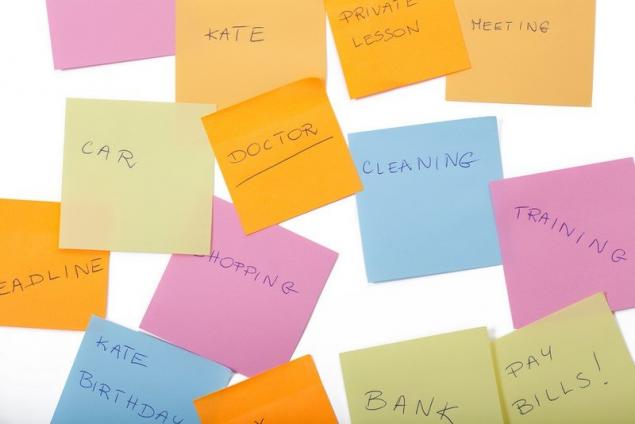
DepositPhotos - "Doing."
This is the task column for the day. Part of the tasks go here from the previous column, and part falls immediately. It is best to enter tasks in this column in the evening and plan for the next day. - "Testing"
This is the intermediate column into which tasks from the Do column fall. This column is designed for a child, where he moves stickers with tasks he thinks he has done. Then they are subject to parental inspection and, if executed, fall into the column "Done". If the task, according to the parents, is not completed, then the sticker returns back to the Do column. - "Ready."
There is only room for completed tasks. Stickers should be left until the end of the day to see the results.
DepositPhotos
Basically, this is the whole method, but there are a couple of important nuances. First and foremost, the board does not live on its own. You need to follow it, constantly discuss tasks, talk about why one task was difficult, why something did not happen. Even when busy, you can find 10-15 minutes in the evening to discuss everything.
First, disassemble the “Verification” column. Did all the tasks really happen? Be sure to praise the child for the completed tasks and find out why the remaining ones in the Do column are not done. Then move some tasks from the Nado column to the Do column to plan tomorrow.

DepositPhotos
The same review should be done at the end of the week. Analyze completed tasks, praise everyone, free the board from unnecessary stickers and fill in new ones. Regularity is essential to achieve maximum efficiency. But do not put pressure on the child, so that the board does not become the subject of quarrels and does not cause a backlash.
Don't turn the board into a tool of suppression. Let your child plan some things yourself, be sure to add something pleasant, like computer games or watching cartoons. It should be, but only after the rest of the work is done. This will teach the child that everything has its time and the faster he does something important, the faster he can relax and have fun.
It helps to organize the child, make him responsible and executive. It is good if there are things on the board for parents, so that there is someone to take an example from. Having established such a simple system, you will quickly notice how your life and the life of a child changes.

The process of parenting has never been easy, but maybe this system will help you. With it, everyday tasks will become easier, and the lazy will turn into a child who knows how to plan his activities and cope with various tasks. Of course, this system is not suitable for everyone, because children are very different, but we hope that you will need it!
What do you think of this education system? How do you like that idea? Share with us in the comments!







